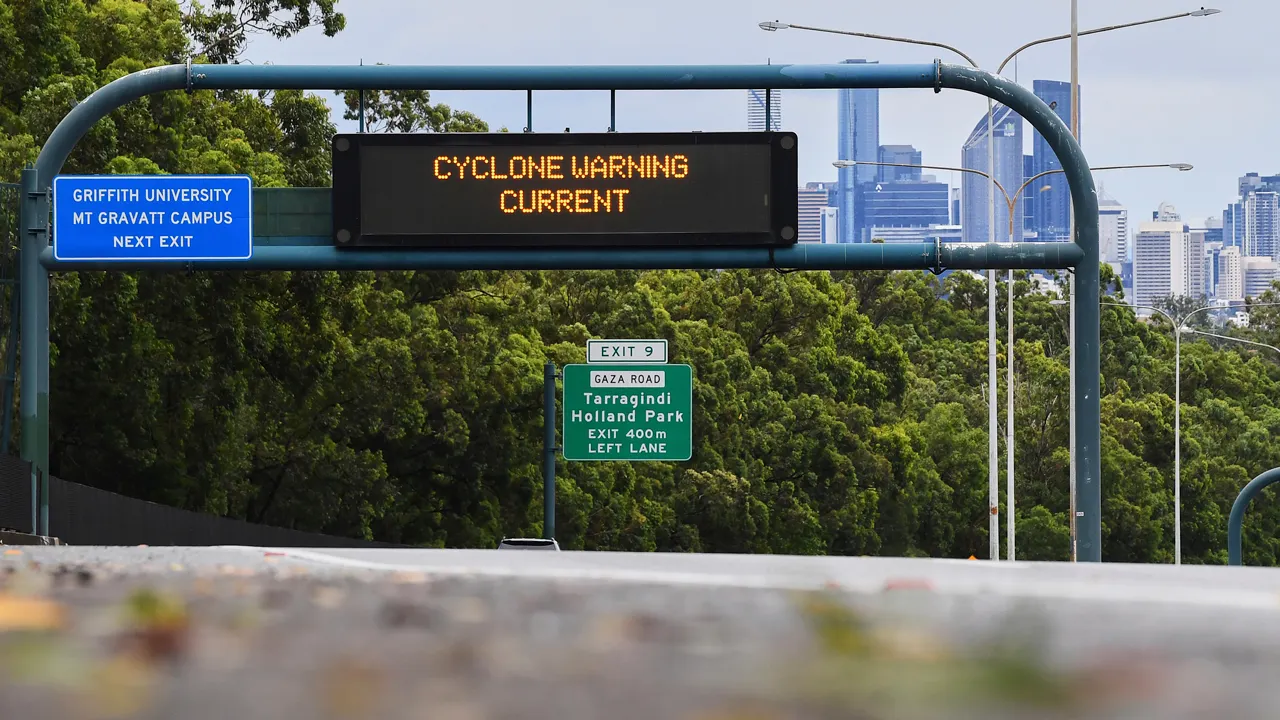Cyclone Alfred: The Brewing Storm Approaching Australia’s East Coast
As Cyclone Alfred approaches, residents along Australia’s east coast are preparing for the potential disruption that this brewing storm could bring. Although the storm’s intensity is diminishing, the unpredictable weather patterns associated with cyclones can lead to significant impacts, particularly in vulnerable areas. With the storm nearing landfall, it’s crucial to understand both the immediate risks and the broader implications for communities and the environment.
Understanding Cyclone Alfred
Cyclone Alfred is classified as a tropical cyclone, which is a weather system characterized by a low-pressure center surrounded by thunderstorms that produce strong winds and heavy rain. This particular cyclone has been monitored closely by meteorological agencies, providing updates on its trajectory and expected impacts. Despite its weakening status, it is essential to note that cyclones can still generate severe weather conditions, including:
- Heavy rainfall leading to flash flooding
- Strong winds capable of causing structural damage
- Storm surges that can inundate coastal areas
The Australian Bureau of Meteorology (BOM) has been at the forefront, issuing timely warnings and forecasts to keep the public informed. Their expert assessments help communities prepare for the worst while hoping for the best.
Impacts on Local Communities
As Cyclone Alfred approaches, many residents are reflecting on past experiences with cyclones. Areas that have faced severe weather in the past are particularly wary. In these communities, the psychological impact of such storms can be profound. People often find themselves balancing between preparing for the worst while hoping for minimal disruption.
Here are some of the anticipated impacts on local communities:
- Evacuations: In low-lying areas and regions prone to flooding, authorities may issue evacuation orders to ensure public safety. Residents are urged to have emergency plans in place, including safe routes and places to stay.
- Infrastructure Strain: Heavy rainfall and strong winds can lead to infrastructure damage, disrupting services such as electricity, water supply, and communication networks. Local governments are often on high alert, ready to mobilize resources for recovery efforts.
- Emergency Services: First responders prepare for increased calls for assistance. From fallen trees to flooding, emergency services play a crucial role in ensuring community safety during and after the storm.
The Environmental Considerations
The impact of Cyclone Alfred extends beyond immediate human concerns; it also poses significant risks to the environment. Cyclones can lead to the following ecological challenges:
- Coastal Erosion: The storm surge and high winds can accelerate coastal erosion, altering habitats and threatening wildlife.
- Water Quality: Increased rainfall may lead to runoff that contaminates local waterways, affecting both aquatic life and drinking water supplies.
- Habitat Disruption: The strong winds can uproot trees and destroy habitats, posing a threat to biodiversity in affected areas.
Environmental agencies are often engaged in monitoring and mitigating these impacts, assessing long-term effects on ecosystems and wildlife populations.
Preparing for Cyclone Alfred
Preparation is key when a storm like Cyclone Alfred is on the horizon. Here are some practical steps residents can take to ensure their safety and that of their families:
- Stay Informed: Keep up to date with information from reliable sources such as the BOM and local news outlets.
- Emergency Kit: Prepare an emergency kit containing essential supplies such as water, non-perishable food, medications, flashlights, and batteries.
- Secure Property: Take measures to secure outdoor furniture, vehicles, and any loose items that could become projectiles in strong winds.
- Plan Evacuations: Know your evacuation routes and have a plan in place for where you will go and how you will get there.
By taking these precautions, residents can significantly reduce the risks associated with Cyclone Alfred and ensure a more organized response to the storm.
The Role of Community and Support Networks
During times of crisis, community support networks often become invaluable. Neighbors tend to look out for one another, sharing resources and providing assistance when needed. Local organizations may set up shelters for those displaced by the storm, and volunteers often step up to help with recovery efforts.
Social media has also played a pivotal role in fostering communication and coordination among community members. Platforms allow residents to share updates, request help, and offer support, creating a sense of solidarity during challenging times.
Looking Ahead: Recovery and Resilience
Once Cyclone Alfred has passed, the focus will shift from preparation to recovery. This phase is crucial for restoring normalcy in affected communities. Recovery efforts can include:
- Damage Assessment: Local authorities will assess damage to infrastructure and homes to prioritize repairs and aid distribution.
- Financial Assistance: Governments often provide financial aid to help affected individuals and businesses recover from economic losses.
- Community Counseling: The psychological impact of severe weather can linger, and mental health resources may be necessary to help residents cope.
Building resilience against future storms is equally important. Communities may invest in better infrastructure, improved emergency services, and public education campaigns to prepare for future events. These proactive measures can help mitigate the effects of similar storms down the road.
Conclusion
Cyclone Alfred serves as a reminder of the power of nature and the importance of preparedness. While the storm’s intensity may be diminishing, the potential for disruption remains significant. As residents along Australia’s east coast brace for unpredictable weather patterns and possible flooding, it’s essential to remain informed, prepared, and supportive of one another. Together, communities can navigate the challenges posed by Cyclone Alfred and emerge stronger and more resilient.
In conclusion, the brewing storm is not just a meteorological event; it’s a collective experience that highlights the strength and solidarity of communities in the face of adversity. With informed preparedness and community support, residents can weather the storm and look toward a hopeful recovery ahead.
See more Your Daily Weather



